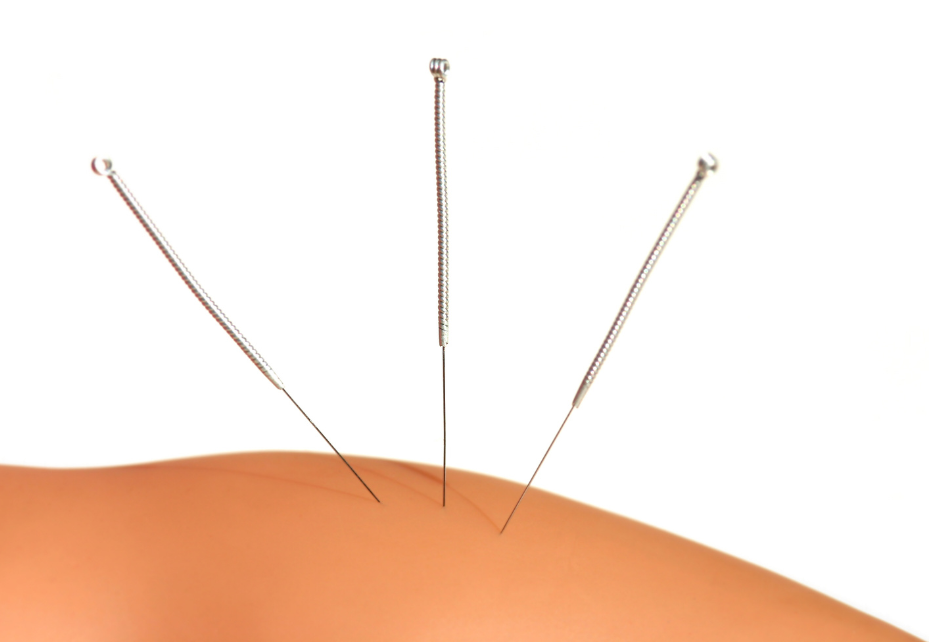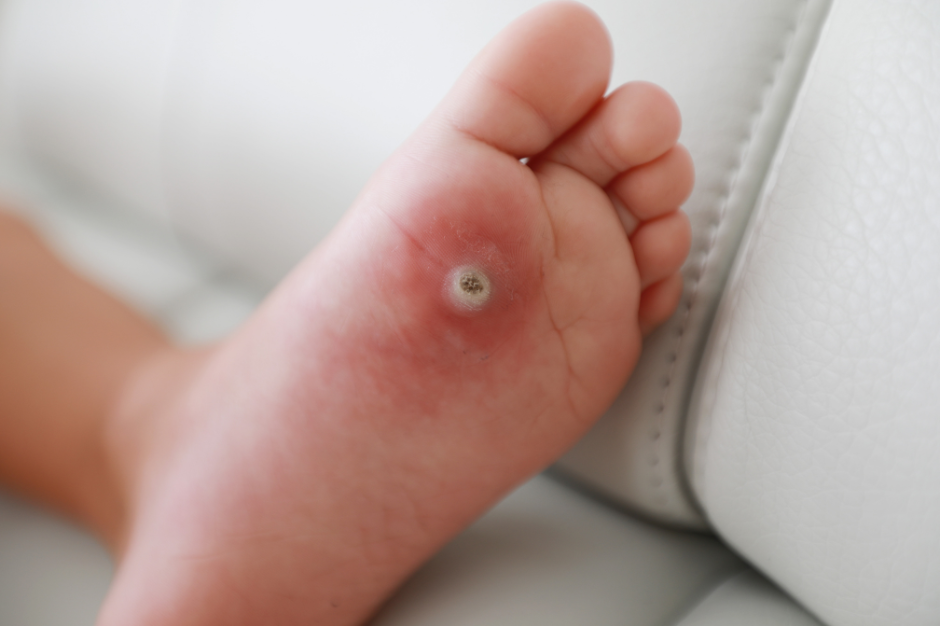
Jump to section
Also known as dry needling for plantar
warts,
during the multiple puncture technique, your podiatrist uses thin syringe needle to repeatedly puncture the wart. This is done under
local anaesthetic so that the procedure is painless, and is thought to work by pushing the infected cells into the deeper layers of the
skin, so that an immune response is triggered, the wart is detected, and the body gets to work on clearing the virus.
The multiple puncture technique works because it is thought that the body has a tendency to overlook the top, superficial layer of the skin called the epidermis, so it doesn't take appropriate action on the wart. By pushing viral cells down below to the dermis, a response is triggered and the right antibodies are produced. As the body gets to work, the wart goes through a natural deterioration process before disappearing.
Our patients select the multiple puncture technique because:
.png) Your
appointment will start with painlessly debriding the dead skin (callus) overlying yourplantar wart, so we can get directly to the wart
tissue. We’ll then administer local anaesthetic to your foot to completely numb the area containing the wart, making the procedure
painless. We then insert a thin, sterile and hypodermic needle into the wart tissue repeatedly. You may feel some pressure, but no pain.
At the end of the needling, the wart tissue may appear ‘broken up’, and you’ll experience some bleeding. Bleeding in
this case is a great sign - it is supporting your immune system in responding to the wart, and aids in the recruitment of antibodies to
get to work in destroying the wart.
Your
appointment will start with painlessly debriding the dead skin (callus) overlying yourplantar wart, so we can get directly to the wart
tissue. We’ll then administer local anaesthetic to your foot to completely numb the area containing the wart, making the procedure
painless. We then insert a thin, sterile and hypodermic needle into the wart tissue repeatedly. You may feel some pressure, but no pain.
At the end of the needling, the wart tissue may appear ‘broken up’, and you’ll experience some bleeding. Bleeding in
this case is a great sign - it is supporting your immune system in responding to the wart, and aids in the recruitment of antibodies to
get to work in destroying the wart.
Next, we’ll apply a dressing to the area paired with an offloading pad so you can continue to walk on your foot comfortably as the anaesthetic wears off. You may be given some aftercare instructions for the first 48 hours after your procedure, depending on the size and location of your wart.
Once the anaesthetic wears off after a few hours, there may be some slight discomfort for the first couple of days and pain relief in the form of non-steroidal anti-inflammatory medication (NSAIDs) may be taken. The site of the procedure may be checked by your podiatrist approximately two weeks following the procedure to check healing and debride any hard skin over the wart that may have developed and be causing you discomfort when walking.
 When
you come into our clinics with a plantar wart, you can be sure that your podiatrist will take the time to explain all of our range of
treatment options, the benefits of each, and which may be most suitable for you based on your circumstances. We also offer:
When
you come into our clinics with a plantar wart, you can be sure that your podiatrist will take the time to explain all of our range of
treatment options, the benefits of each, and which may be most suitable for you based on your circumstances. We also offer:
Yes, we take every precaution when it comes to your safety throughout the procedure. This is a common procedure in our clinic, and as such, we’re very good at it!
The only thing you’ll feel during the procedure is the momentary pinch of the local anaesthetic being injected into your foot. From there, the procedure is completely pain-free.
Warts can appear on the foot again following any wart treatment, and at any time. This is because once infected with the HPV virus that causes warts, it remains inside your body and may present as warts at different times in your life. There is no treatment available by anyone on the market that can prevent warts altogether. Instead, treatment focuses on removing the painful or uncomfortable warts in question that are currently having a negative impact on your quality of life, which it does successfully.
| Monday | 7:40am - 6:00pm |
| Tuesday | 7:40am - 6:00pm |
| Wednesday | 7:40am - 6:00pm |
| Thursday |
7:40am - 6:00pm |
| Friday | TEMP CLOSED |
| Saturday | CLOSED |
| Sunday | CLOSED |
Ground Floor, 344 Queen Street,
Brisbane City QLD 4000
| Monday | 7:40am - 6:00pm |
| Tuesday | 7:40am - 6:00pm |
| Wednesday | 7:40am - 6:00pm |
| Thursday |
7:40am - 6:30pm |
| Friday | 7:40am - 5:00pm |
| Saturday | 7:40am - 4:30pm |
| Sunday | CLOSED |
Newmarket Village, 114/400 Newmarket Rd, Newmarket QLD 4051